In today’s digital age, screens have become a big part of our lives, from smartphones to computers. While these devices make things easier, they’re also linked to a growing problem – more kids having trouble seeing far away, a condition called myopia or nearsightedness.
Myopia means your child can see things up close clearly, but distant objects seem blurry. It usually starts in childhood and can get worse over time. The more time kids spend looking at screens and less time outdoors, the more likely they are to develop myopia.
Experts say myopia has become a big issue, especially in cities where kids spend a lot of time indoors. By 2020, nearly 30 percent of the world’s population had myopia, and experts predict it could affect half of us by 2050.
But myopia isn’t just about needing glasses. It can lead to serious vision threatening eye problems later in life. Quality of life may also decrease with increasing myopia. That’s why it’s important to control its progression early on.
Thankfully, there are ways to manage myopia in kids. Instead of just giving glasses, there are treatments to slow down how fast myopia gets worse. These can include special eye drops (atropine), myopia control glasses, orthokeratology, or other contact lenses.

Taking care of your child’s eyes and managing their myopia involves more than just getting the right treatment. It’s also about keeping their eyes healthy and comfortable in the long run. Just like we brush our teeth to keep them healthy, there are things we can do to maintain good eye health too.
Lid Hygiene
Think of lid hygiene as like dental hygiene. Similar to how we clean our teeth every day, it's important to clean our eyelids regularly to keep them healthy. Use doctor recommended lid cleaning products to gently wash and maintain your child's eyelid and lash health. This helps to remove any debris or bacteria that can accumulate and cause problems like dry eyes or infections.
Breaks from Screens
Encourage your child to take regular breaks from screens, whether it's from their phone, tablet, or computer. Looking at screens for too long can strain their eyes and contribute to dryness. For instance, a study from 2016 highlighted a strong link between smartphone use and pediatric eye disease.
Outdoor Time
Spending time outdoors not only benefits your child's overall health but can also help with their vision. Studies have shown that spending time outdoors can help reduce the progression of myopia. Aim for at least two hours of outdoor time each day.
Stay Hydrated
Drinking plenty of water is important for overall health, including eye health. Proper hydration can help maintain the moisture levels in your child's eyes, reducing the risk of dryness and discomfort.
Regular Eye Exams
Make sure your child has regular eye exams with an eye care professional. This allows any vision changes or eye health issues to be detected and addressed early.
Regular eye check-ups are also essential. They help spot myopia and other eye problems early. Alberta Health Care covers part of these check-ups for kids until they’re 19. Since about 80 percent of learning happens through the eyes, it’s vital to keep them healthy.
There are things parents can do at home to help too. Encouraging outdoor playtime and making sure kids get enough sleep are protective against myopia.
The Canadian Pediatric Society recommends limiting screen time, especially for younger kids, to protect their eyesight.
When it comes to taking care of your eyes and managing myopia, it’s important to know when to start and stop myopia management therapies.
Let’s break it down in a way that’s easy to understand.
Starting Myopia Management:
- There's no set age to start myopia management. We look at your eyes and consider any risks you might have.
- Factors like your age, family history of myopia, and how much time you spend doing close-up activities can help us decide when to start.
Stopping Myopia Management:
- We usually think about stopping around your late teens to early twenties. But everyone is different, and we consider how well the treatment is working for you.
- If your eyes aren't getting worse or are only changing a little each year, we might keep going with the treatment.
Here's Why Starting Early Matters:
- Myopia can start young, and younger kids are more likely to see their vision get worse.
- If your parents or siblings have myopia, you might be more likely to have it too.
- Certain ethnicities, like East Asians, have a higher risk of myopia.
- Spending too much time up close, like reading or looking at screens, can make myopia worse.
- Even small changes in your vision, called diopters, can make a difference in how well you see.
- There are vision-threatening ocular health risks associated with increasing myopia.
Quality of life is crucial in myopia management, and recent studies have emphasized how important this is. In the end, successful decision-making about starting and stopping myopia management therapies requires considering various factors unique to each patient, including their age of onset, risk factors, response to treatment, and quality of life.
At the end of the day, our goal is to make sure your child see clearly and comfortably.
Remember, your child’s eye health is a journey, and we’re here to help every step of the way. If you have any questions or concerns about your child’s eyes or their myopia treatment, don’t hesitate to ask. We’re here to help make sure your child’s eyes stay happy and healthy for years to come.

Dr. Sheila Morrison, Optometrist (MS, FAAO, FSLS)
Dr. Morrison’s numerous academic and clinical accomplishments are renowned in the eye care world. Dr. Morrison lectures internationally and has a research focus on scleral contact lenses and myopia management, particularly using orthokeratology.
References:
- Flitcroft DI, et al. IMI—defining and classifying myopia: a proposed set of standards for clinical and epidemiologic studies. Invest Ophthalmol Vis Sci.
2019;60:M20–M30. - Bullimore MA, Richdale K. Myopia Control 2020: Where are We and Where are We Heading? Ophthalmic and Physiological Optics 2020;40:254–270
- Chua SY, et al. Age of onset of myopia predicts risk of high myopia in later childhood in myopic Singapore children. Ophthalmic Physiol Opt. 2016;36(4):388-94
- Liao C, et al. Role of Parental Refractive Status in Myopia Progression: 12-Year Annual Observation From the Guangzhou Twin Eye Study. Invest Ophthalmol Vis Sci. 2019;60(10):3499-3506
- Tedja MS, et al. IMI—myopia genetics report. Invest Ophthalmol Vis Sci. 2019;60:M89–M105
- Jiang X, et al. Association of Parental Myopia With Higher Risk of Myopia Among Multiethnic Children Before School Age. JAMA Ophthalmol. 2020 May 1;138(5):501-509
- Ip JM, et al. Ethnic Differences in Refraction and Ocular Biometry in a Population-Based Sample of 11-15-Year-Old Australian Children. Eye (London,
England) 2008;22:649-56 - Rudnicka AR, et al. Ethnic Differences in the Prevalence of Myopia and Ocular Biometry in 10- and 11-Year-Old Children. Investigative ophthalmology & visual science 2010;51:6270-6
- Xiong S, et al. Time Spent in Outdoor Activities in Relation to Myopia Prevention and Control: A Meta-Analysis and Systematic Review. Acta ophthalmologica 2017;95:551-66
- Logan NS, Wolffsohn JS. Role of un-correction, under-correction and over-correction of myopia as a strategy for slowing myopic progression. Clin Exp Optom. 2020 Mar;103(2):133-137
- Bullimore MA, Brennan NA. Myopia Control: Why Each Diopter Matters. Optometry and Vision Science 2019;96:463–4651
- Lipson MJ, et al. Vision-related quality of life with myopia management: A review. Contact Lens and Anterior Eye. 2021 Nov 18:101538
- Logan N, Bullimore M. Optical Interventions for Myopia Control. Nature; The Royal College of Ophthalmologists 2023. https://doi.org/10.1038/s41433-023-02723-5
- Jawaid I, et. Al. Low concentration atropine and myopia: a narrative review of the evidence for United Kingdom based practitioners. Nature; The Royal College of Ophthalmologists 2023. https://doi.org/10.1038/s41433-023-02718-2
- Moon J, Kim K, Moon N. Smartphone use is a risk factor for pediatric dry eye disease according to region and age: a case control study.





